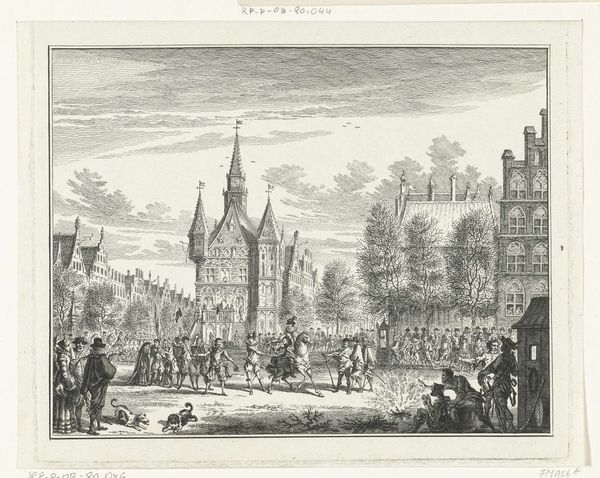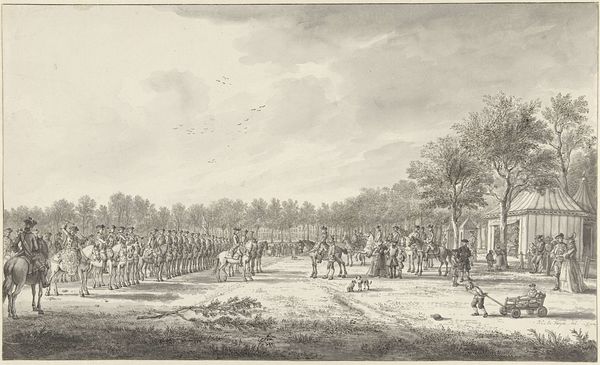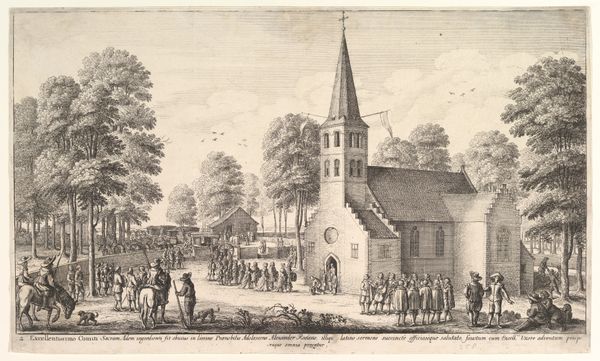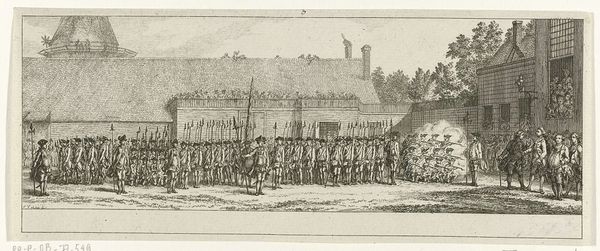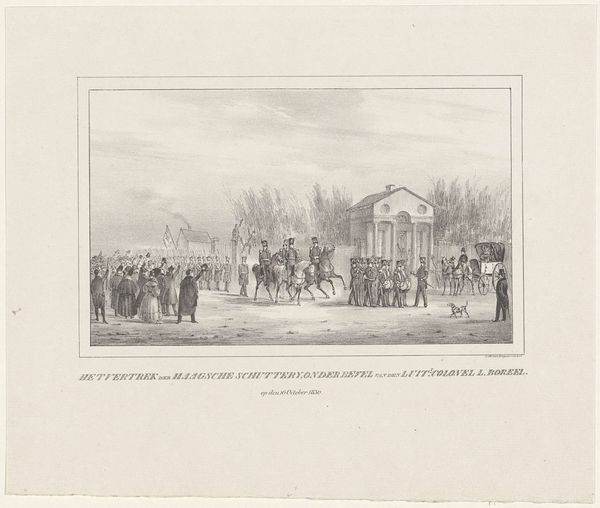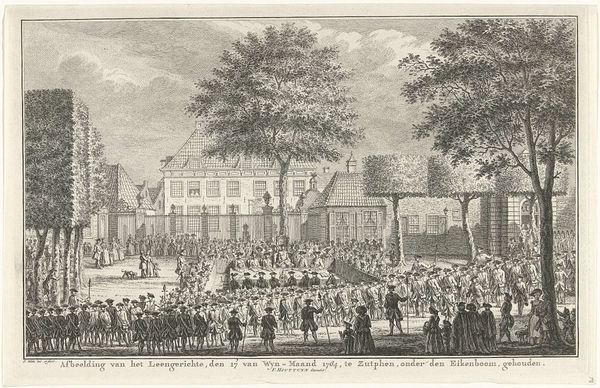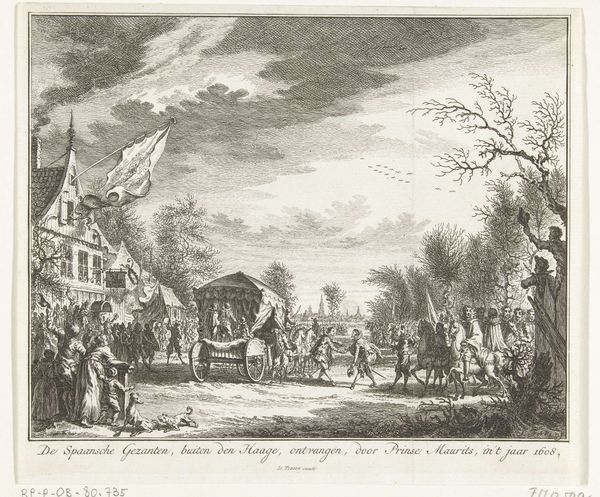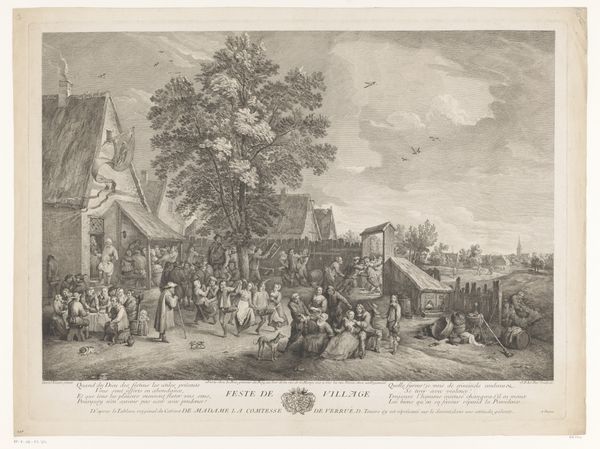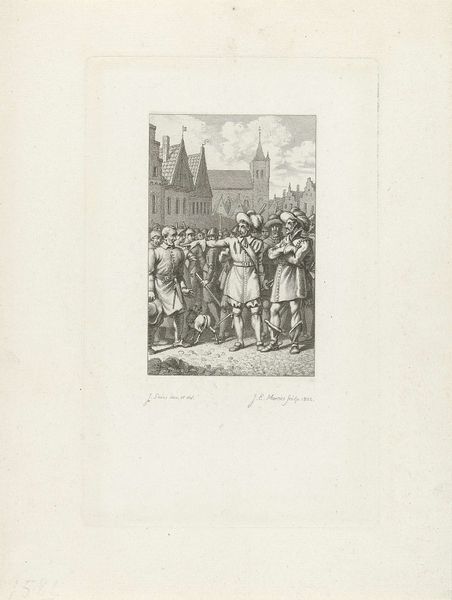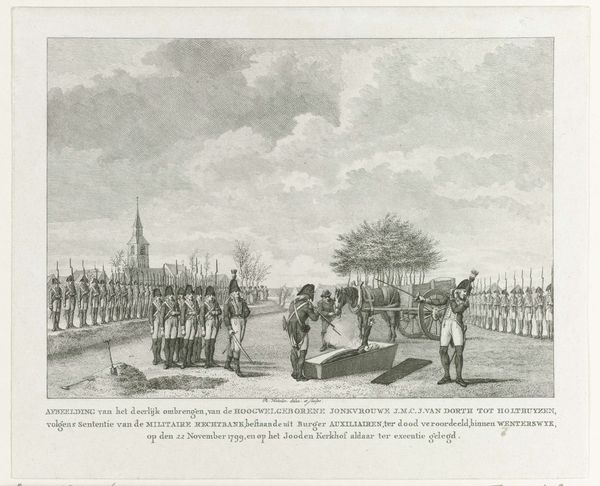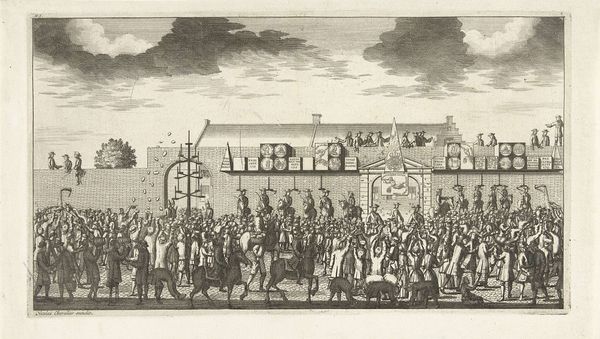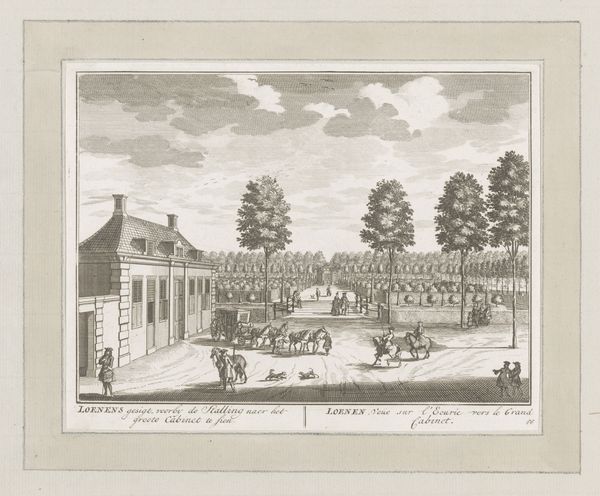
Overdracht van twee gevangenen aan de militaire rechter, 1753 1753 - 1755
0:00
0:00
drawing, print, etching, ink, engraving
#
drawing
#
baroque
#
pen drawing
# print
#
etching
#
landscape
#
figuration
#
ink
#
line
#
genre-painting
#
history-painting
#
engraving
Dimensions: height 184 mm, width 245 mm
Copyright: Rijks Museum: Open Domain
Editor: So, this is "Overdracht van twee gevangenen aan de militaire rechter, 1753," or "Delivery of two prisoners to the military judge, 1753," by Simon Fokke, created between 1753 and 1755. It’s an etching or engraving. There's a strong sense of... theatricality in how the figures are arranged. What do you see in this piece, especially considering the means of production? Curator: Well, as a materialist, I immediately consider the etching process. Think about the labour involved in creating this image—the meticulous work of the engraver, the copper plate itself, the acid used for etching. The act of reproducing this image makes it accessible. What's being circulated here, and what power does it give the work? Editor: That's interesting. It highlights that the purpose might have been distribution of this event beyond just the local gathering... I also notice how the very public nature of this transfer speaks to power dynamics, right? The gallows looms, emphasizing state control... Curator: Precisely. And who had access to prints like these? Think about the rise of a middle class and its consumption of visual imagery. What social context is Fokke commenting on? What is this print saying about the law and authority? Editor: So the *means* of creating this artwork, the materials and their spread through society, helps define its social meaning, rather than just appreciating its aesthetic value, interesting! Curator: Exactly. We understand history not just through grand narratives but through the objects people make, use, and circulate. And these, like Fokke's print, are not always what they seem to be upon first glance. Editor: I hadn't considered how the print medium itself influences the message. It makes me rethink what I thought I knew about 18th-century justice. Curator: And hopefully it also makes you reconsider assumptions of 'high art'. Labor and function also communicate historical insight!
Comments
No comments
Be the first to comment and join the conversation on the ultimate creative platform.
